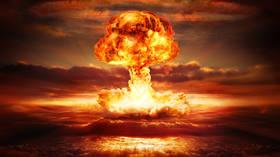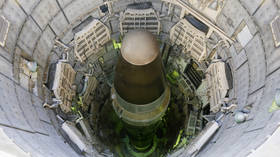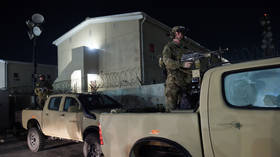Sonja vandenende
17:26 (4 uur geleden)
aan sonja, bcc: mij
Sinds vanmiddag zijn er beelden over de zogenaamde Syrische vluchtelingen die Griekenland binnen zouden willen. De reguliere media zoals de NOS spreken over duizenden Syriers. Echter uit veel bewijsmateriaal blijkt dat het geen Syriers zijn, maar Turks of anderstalig sprekende jonge mannen. Het zouden de Jihadisten van Erdogan kunnen zijn - Hayat -Tahrir-as-Sham, Al-Queda, Al-Nusra, Turkistan Party. Dus Europa wordt wederom overspoeld met jihadisten.
https://www.youtube.com/watch?v=n_Oin50nYoQ
Nog steeds geen woord Arabisch, misschien Urdu, Perzisch Turks? https://www.youtube.com/watch?v=V1w2f_J4ITY
https://www.youtube.com/watch?v=V-pYkuorUoc
DO NOT ALLOW TURKISH SPEAKING WITH TURKISH PASSPORTS ESPECIALLY. Please we are not racist. I have many many Muslim friends but we have been watching this war for nearly a decade. Idlib takfiris are extremely dangerous. If your islands are at breaking point please please be careful.
Greek Foreign Ministry:
🔴 We have prevented more than 4,000 attempts to cross our borders illegally over the past 24 hours.
More than a third of those who tried to cross were Turkish and held Turkish passports, and this is incomprehensible to us.
Reinforcements were sent to land and sea borders
We go back and confirm... we will not allow illegal crossing of our borders.
https://www.facebook.com/243838729037941/posts/2853615554726899/?vh=e
De Deutsche Welle presentatrice staat in dit geval wel bij een hek met wat kinderen erachter maar het zijn wederom geen Syriers, zij sprak met een familie uit Iran: https://www.youtube.com/watch?v=NGqBSTZBkUo
Met vriendelijke groet
Sonja van den Ende
freesuriyah.eu
Redactie: freesuriyah@hotmail.com
https://www.facebook.com/sonja.vandenende
Twitter: SonjaEnde
contributer bij http://oneworld.press/
contributor bij http://inforos.ru/en
contrinutor bij http://infobrics.org/
https://stopdebezetting.home.blog/
Erdogan's incursion and appeals for US help have set back the pro-Turkish current in Moscow, consolidated Russia's position around the military view
On the battlefields of northwest Syria, the initiative at the start of each day has been the Turkish side’s, too. But at the end of the day the Russians have inflicted defeat. Not often in five hundred years of communications between the Porte and the Kremlin, has the subliminal message been so clear. There is another subliminal message from the Kremlin. “We,” Dmitry Peskov, the Turkish-speaking spokesman for the Russian President, said on Wednesday. “used to be satisfied with the agreements reached in Sochi more than a year ago and this satisfaction was mutual. However, we are completely dissatisfied now that militants and terrorists have begun advancing from Idlib and attacking Syrian forces and Russian military installations.” This is a signal from the Moscow lobby for the Turks that it too is in retreat — from the Russian Defence Ministry and the General Staff.
The battle maps and operation assessments published in the Arabic media, and added to by Moon of Alabama and South Front, show the Turkish-occupied area of Syria (green on the map) is being steadily squeezed by Syrian and Russian forces (red) north and westwards to the Syrian-Turkish border, clearing first the M5 national highway into western Aleppo, and then the M4. At the same time, further to the east as the M4 approaches the Iraqi border, small American units are being deployed without warning or agreement to deter the coming allied advance.
The tactical Russian objective is to deter Turkish-directed attacks against the Syrian advance, and if they break through Syrian lines, as occurred at Al-Nayrab, east of Idlib late last week, to repeal the thrust, and drive the Turks back. The strategic objective is to eliminate the Turkish-backed jihadi forces and the Turkish “observation posts” and “buffer zone” created by the two agreements Erdogan arranged with Putin at Sochi in September 2018 and October last year. For the texts of those agreements, and Putin’s concessions, read this and this.
What is happening now on the ground is the military implementation of the letter of the agreements, instead of the interpretation the Kremlin allowed the Turks at the time. The Stavka, as Foreign Minister Sergei Lavrov, Defence Minister Sergei Shoigu and the General Staff, headed by Valery Gerasimov, can be called, have achieved on the ground what Erdogan thought he had taken from Putin on paper.
“Nobody gave a promise to terrorists,” Lavrov said on Wednesday, “ that they would be safe in the Idlib zone, just read the agreements between the Russian and Turkish presidents and everything will fall into place.” Lavrov was referring explicitly to Points 3, 5 and 7 of last year’s Sochi agreement; they also disallow the new deployments of Turkish artillery and tanks beyond the 32-km line from the Turkish frontier.
The next day, February 20, Lavrov’s spokesman Maria Zakharova amplified the geography set down in Point 1 of the Sochi agreement:
“As for [Erdogan] demanding that the Syrian Government or Syrian forces do anything in Syria, the first thing to remember is that Syria is a sovereign state. The Syrian armed forces are operating on their own land. This must be the basic principle. Of course, the Syrian army is interacting with military personnel from Russia and other countries, yet the international community must never forget the basic principle I have mentioned. Such statements should be made through special channels, which will be more effective.”
On Saturday February 22, Defence Minister Sergei Shoigu discussed with Turkish Defence Minister, General Hulisi Akar, the fighting in the Idlib zone. “During the phone conversation,” the state Sputnik news agency reported, “[the ministers] discussed the issues [related to the] stabilization of the situation in the Idlib de-escalation zone,” the ministry said. According to the MoD, the two sides exchanged opinions on the situation in Syria more broadly. No further information about the call was provided.”
Press statements from Shoigu’s subordinates have explicitly called Turkish claims lies, and spelled out the reinforcements Erdogan has been sending into the zone. “There is no confirmation to reports that ‘about a million’ refugees are moving from the de-escalation zone in Idlib to the Syrian-Turkish border, the head of the Russian Centre for the Reconciliation of the warring parties in Syria, Rear-Admiral Oleg Zhuravlev said. ‘The information about the alleged ‘hundreds of thousands’ of civilian residents of the province heading for the Syrian-Turkish border because of military clashes between terrorists and the Syrian government forces in the east of the province is not true,’ he said. Transport routes in Idlib have been working as usual these past few weeks, which has made it possible to move weapons and cargo transport with ammunition from Turkey into the area, he added.”
“Earlier this week, the Russian Defence Ministry said militants loyal to Ankara and supported by Turkish artillery had attacked the defences of the Syrian army near the villages of Qmenas and Nerab in Idlib. Russia’s Su-24 aircraft fired at the militants and helped the army repel the attack. According to the Turkish Defence Ministry, two Turkish soldiers were killed and five more injured in the attack in Idlib, while more than 50 Syrians were killed in the retaliatory fire.”
Erdogan’s calls to Putin have been a last resort to cover his attempted breakouts in Idlib and prevent a rout of his men to the border.
The reply of the Stavka is that if the Turks use artillery and armour in support of attacks on the Syrian Army or Russian zone patrols by Turkish proxy troops and Turkish regulars, the Russian Air Force will counter-attack and repulse them.
On February 12 the Kremlin communiqué of Erdogan’s call reported: “Vladimir Putin and Recep Tayyip Erdogan continued the discussion regarding various aspects of the Syrian peace process, primarily in the context of the recent aggravation in the Idlib de-escalation zone. They also noted the importance of the full implementation of the existing Russian-Turkish agreements, including the Sochi Memorandum of September 17, 2018. Additional contacts between the relevant government agencies were planned for these purposes.” “Full implementation” has meant something entirely different to Erdogan from the Russian interpretation, but Putin didn’t exactly say so, according to the public record. Instead, he has allowed “the relevant government agencies” to do the interpreting and implementing; that’s to say, boots on the ground, and in the air.
As Erdogan escalated his public threats, and the Russian-Syrian forces defeated him, the Turkish president telephoned again: “The focus of the conversation was again on the developments in the Idlib de-escalation zone,” the Kremlin report said, emphasizing that Putin’s mouth was still where his Syrian boots were standing.
That message had been decided for Putin by the Stavka; the time of the call had been pre-arranged between the two presidents’ staffs. In anticipation and before Erdogan telephoned, Putin met with the Security Council. Erdogan’s call was reported by the Kremlin at 2030. The Council met several hours earlier, and the record posted at 16:10. Then it was reported: “The situation around Idlib, including in the context of a telephone conversation between the Russian and Turkish presidents scheduled for the evening of February 21, was discussed in detail.”
Putin — the message for Erdogan was telegraphed in advance — would speak for the collective. According to the Russian version of the telephone conversation, “Vladimir Putin raised serious concerns over the continuing aggressive actions of the extremist groups” – that also included Turkish artillery barrages and Turkish movement into Syria of fresh fighting vehicles, armour, ammunition, and missiles. “Emphasis was put on the necessity to unconditionally respect the sovereignty and territorial integrity of the Syrian Arab Republic” – that meant the recapture of the M4 highway, consolidation of Syrian control of the M5, and an end to Turkish “observation posts” working as shields for jihadi offensives. It also meant that the Russian Air Force and its ground-based missile units would defend Syrian air space from Turkish incursions.
“The two presidents agreed,” claimed the communiqué, “to encourage bilateral interagency consultations on Idlib to ease tensions, provide for a ceasefire and neutralise the terrorist threat. They reaffirmed that contact between military agencies would continue in a more intense manner.” Again, this is boots on the ground doing the talking, not the Sochi paperwork, nor the pro-Turkish lobby which has been influential over Putin until now. For that, click to read.
Putin’s [sometimes pro-Turkish] spokesman Peskov signaled his own retreat on February 12. “The Syrian military in Idlib strikes at terrorists and not at civilians, said the Press Secretary of the President of Russia Dmitry Peskov. Earlier, Turkish President Recep Tayyip Erdogan has accused Moscow and Damascus in the attack on the civilian population. ‘As for the attacks on Idlib, which are carried out by the Syrian military, these are attacks on terrorists, not on civilians. Their goal is to neutralize the terrorists and neutralize their aggressive activities that they carry out from there,’ Mr. Peskov said. He assessed the situation as ‘tense’ and it continues to cause concern. The Press Secretary recalled the Sochi agreements with Turkey, according to which Ankara was supposed to neutralize the terrorists in Idlib. But, according to Mr. Peskov, terrorist organizations are still striking Syrian troops and Russian military targets.”
A week later on February 19, Peskov’s position lost its ambiguity. He was now talking about the Turks. “We used to be satisfied with the agreements reached in Sochi more than a year ago and this satisfaction was mutual. However, we are completely dissatisfied now that militants and terrorists have begun advancing from Idlib and attacking Syrian forces and Russian military installations.”
Erdogan’s application to Washington for US Patriot missiles on his side of the Syrian border left Peskov with no defence against Shoigu, Lavrov and Gerasimov; their we-told-you-so is a high-precision guided missile.
Without US reinforcements, plus missile cover for the Turkish Air Force in Syrian airspace, it is the US and Russian assessment that Erdogan hasn’t sent into Syria enough troops to hold the Idlib buffer zone or the M4 highway line against the Syrian advance – just enough troops to risk a rout. According to this analysis by South Front, “in the framework of the [Sochi] agreements, Turkey established 12 observation posts. As the Syrian Army was advancing into Idlib, Ankara created a plethora of additional military positions in a failed attempt to stop the collapse of militants’ defence. These efforts brought the total number of Turkish military installations in the region up to 27.”
“Judging from various footage, there are between one dozen and two dozen soldiers, as well as 4-6 military vehicles at every post located within the areas currently controlled by the Syrian government. The recently created posts are much stronger and can be described as real military positions with battle tanks, howitzers, mortars and fortified structures. The estimated total number of military equipment deployed by the Turkish Armed Forces in Idlib stands at 3,000. Since February 2nd, Turkey deployed 2,315 trucks and military vehicles, as well as 7,000 soldiers. Meanwhile, Turkey has positioned approximately 30,000 troops along the Syrian border in case of an escalation. The equipment and weapons that are being delivered include armoured trucks, MRAPs [Mine-Resistant Ambush Protected vehicles] armoured personnel carriers, battle tanks, ATGMs , various artillery pieces and rocket launchers. Army troops are reinforced with a notable number of special forces.”
If this current 7,000 number is correct, South Front calculates that it compares to the Turkish force total of 8,000 in Operation Euphrates Shield ( August 2016-March 2017); 6,000 in Operation Olive Branch (January-March 2018); and 15,000 in Operation Peace Spring (October-November 2019). The earlier operations were enough to defeat Kurdish and ISIS forces which lacked firepower and air support.
Not this time, though, against the Russian-Syrian combination. “It is unlikely,” according to South Front, “that the Turkish forces currently deployed in Idlib and northwestern Syria will be enough to turn into reality Erdogan’s threats and promises. So, Turkey should hurry up and increase its military group in the area by several times, or Erdogan supporters should start preparing for March 1, the day when the dreams about the swift and powerful Turkish victory over ‘Assad forces’ will be broken by the reality.”
This is also the assessment of the Russian General Staff and its military intelligence. Erdogan, reported Yevgeny Krutikov in Vzglyad, has miscalculated his ability to hold on to Idlib, and as the scale of his defeat has materialized, he has “become hysterical… The restoration of government control over the M5 highway and, in the future, over the M4 radically changes not just the military, but the political situation in Idlib. The issue is not only to restore direct communication, and thus supply Aleppo from the central regions of the country, but also to return to government control a strategic position in the western part of the province of Aleppo and in the southern part of Idlib. The city of Idlib is about 10-12 kilometers away. More than 600 localities have come under government control as a result of the offensive, and the main jihadist group in this area has been almost crushed – and this victory dramatically strengthens Damascus’ negotiating positions on the future structure of Syria.”
“The main goal of the first stage of operation Idlib Dawn was to capture the locality of Saraqib and its surroundings, where the M5 and M4 highways converge (Damascus – Hama – Aleppo and Latakia – Aleppo). On Sunday [February 16], this goal was achieved. Syrian government forces continued their advance against the already collapsed jihadist front and took control of the entire stretch of the strategic highway which the bandits had held for eight years. At the moment it is fully under control. Combat security is not yet everywhere, and in some areas the highway remains the front line, but movement along it is already possible for military equipment…Such a successful advance of the Government army destroys Turkey’s plans to consolidate its positions in Idlib. By remaining in Idlib indefinitely, Ankara could directly intervene in Syria’s affairs as an ‘interested party’, participate in the negotiation process, and even claim physical control over part of Syria’s territory in the future. This explained the build-up of the Turkish military presence in the immediate combat zone.”
“The Turkish side did everything it could to prevent the government troops from solving the important political and strategic task of regaining control of the M5 highway. After this failed, and the militants abandoned all the strategic positions they had held for eight years, calls to Moscow and ultimatums to Damascus began… in these new conditions, the Turkish influence in Idlib will really be reduced to what is written in the Sochi agreements, which until this moment Ankara interpreted in its own way.”
Russian analysts in Moscow treat the Russian position towards the Turks as a unified one. They differ on the readiness for compromise between Putin and Erdogan; they don’t mention that between Putin and his advisers. “The Russian side does not proceed from Erdogan’s ‘wish list’ but from Ankara’s realistic interests,” George Mirzayan, a professor at the Financial University under the Russian government (FinU), told Vzglyad last week. “Those interests are to maintain control over the Syrian-Turkish border and protect Turkey from the flow of refugees. That is, roughly speaking, to be able to keep refugees from Idlib in some part of the Syrian territory controlled by Turkey. Therefore, [the Russian side has] assumed that Turkey retains influence in a small part of Idlib along the Turkish border and over the Kurdish territories that it already controls. Bashar al-Assad, according to Russia’s proposal, liberates the rest of Idlib province. Later, when the parties agree again, the remaining territory of the country would come under Assad’s control.”
Kirill Semenov, head of the Islamic Studies Center at the Innovation Development Institute of Moscow, told Vzglyad in the same publication the loss of Idlib city and most of the province would be a strategic defeat for Erdogan, but he doesn’t yet know where to draw a red line his army can defend. “It is unlikely that Turkey will be ready to expel Assad’s troops from their positions on a large scale, as Erdogan threatens. Most likely, this means the Turks will react more harshly to Assad’s attempts to move forward. So far, we don’t see any Turkish activity to prevent the Syrian Army’s offensive, so it’s hard to say how ready Turkey is for this.”









